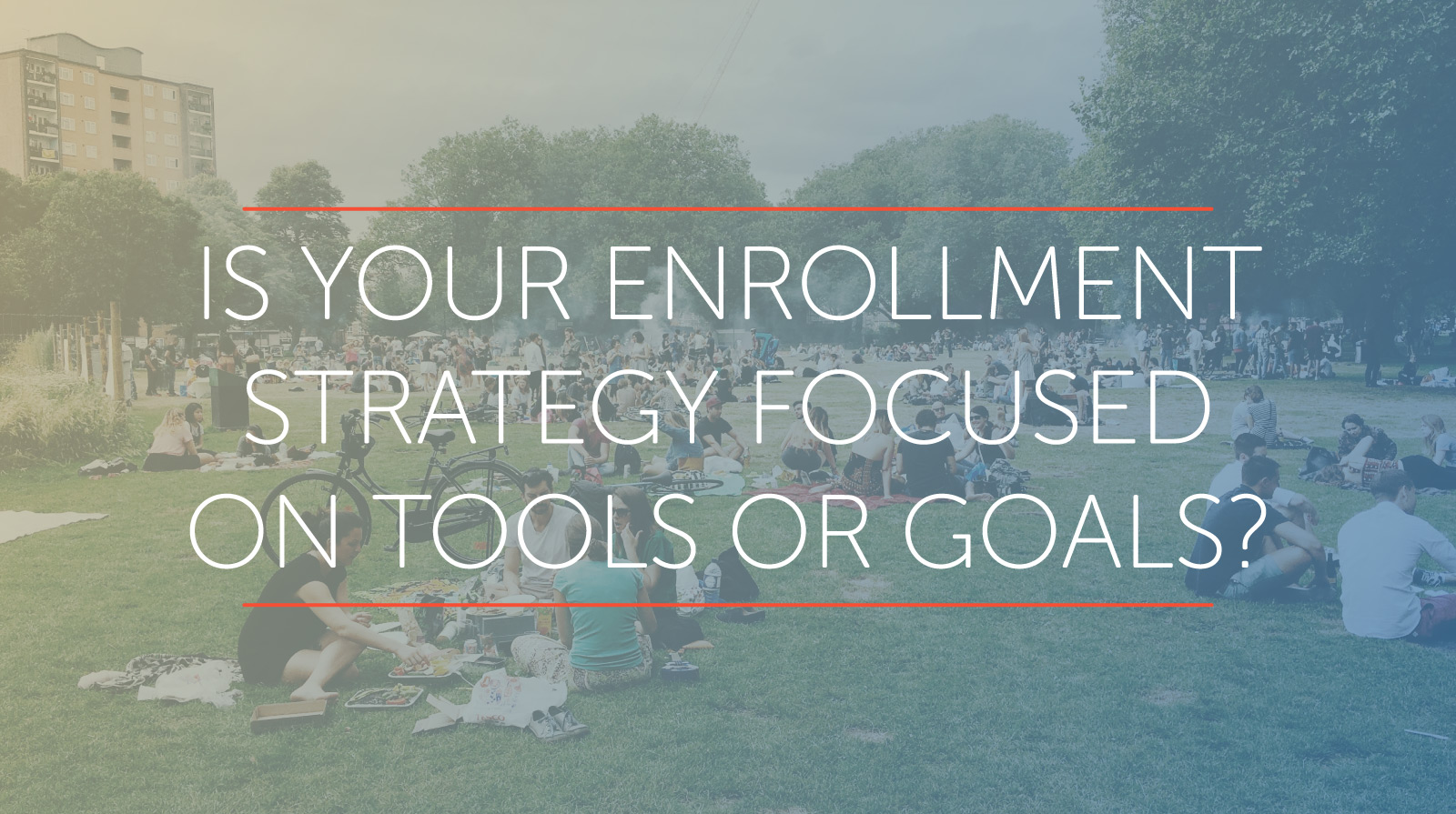How useful are enrollment marketing apps for community colleges?
As community colleges across the country make difficult budgeting decisions, marketing departments have turned to cost saving measures to reach prospective students. While some of the new enrollment apps make marketing more high-tech than ever, there are distinct advantages to a holistic approach. Meeting long-term enrollment and retention goals often requires a multifaceted marketing strategy designed to reach a diverse consumer group.
New options for the new millennium
Millennials are increasingly relying on their smartphones and marketing tools are keeping pace with the consumers. If you haven’t yet explored some of the cutting-edge admissions and enrollment apps available, it’s a great time to start. According to Guidebook, a premier mobile app creator for colleges and universities, students check their smartphones on average 157 times a day. Guidebook helps admissions departments capitalize on new technology by creating interactive mobile guides for student orientations and college campus tours.
Modo, another mobile solution company for universities and colleges, reports that by 2014, eight-five percent of millennials owned a smartphone and the great majority of those said they preferred apps over the mobile web. The student orientation app Modo offers can provide quick access to information about event schedules, pre-arrival checklists, photos and videos, resources from student organizations and more. They can also give alerts about important deadlines and imminent events, so new students stay on top of things.
What is a goals-based approach to enrollment?
Despite the exciting options for connecting with potential students with new enrollment apps, most community colleges benefit from a different kind of approach. Community college students come from many different stages of life – marketing that succeeds in attracting millennials may not draw a 40-year-old man looking to advance his career. He will be more interested in clear information about professional advancement than student life organizations.
And, despite the increasing prevalence of home computers and smart phones, many people in low-income homes still have limited access to these things. Lower income Americans still lag behind in technology adoption. A third of adults who live in households with incomes below $30,000 a year still don’t have smartphone, and nearly half don’t have computers. In part because of this divide, lower income Americans are twice as likely as those in other income groups to be classified as digitally unprepared.
Because of this community colleges need what we call a “goals-based” approach to enrollment. What kind of students are you trying to reach? Once you have a specific goal in mind, like drawing in older workers looking to learn new job skills, think about specific marketing techniques. If you have a tight budget and you are trying to reach older or lower-income students, enrollment apps are unlikely to be a good investment.
Think about your students’ goals as well as your own
Although a community college marketing department should have clearly articulated goals for enrollment and retention, these aren’t the only goals that matter. Analyzing student goals is an excellent way to inform a marketing strategy. Why are they choosing community college and what is most likely to attract them? Understanding what motivates a prospective student means they are more likely to get from a campus tour into a classroom.
Community colleges have the unique opportunity to market themselves to two kinds of students at once. It’s important to reach returning students, and students who were never considering the college track, but also reach students who are choosing between your college and other four-year institutions. Appealing to both students at once, usually on a budget, can be challenging. Still, it is the marketing strategy that community colleges like Ivy Tech have used so successfully to grow enrollment.
Take for example a lower-income adult considering a return to school. She is looking for information about classes that can be flexibly scheduled around her existing job and will help her advance in her career. She may need to be educated about the value of a degree or credential and convinced that community college is the right choice. If she doesn’t have a home computer or smartphone, she’s more likely to respond to a well-designed mailing than an app or a social media presence.
A younger and higher-income student choosing between community college and a variety of four-year institutions, however, is very likely to look online for information. They will probably use google to find information and spend some time on different websites comparing options. They are likely to use their smartphone to carry out this search and keep track of important information. To appeal to this kind of prospective student community colleges need an online presence and quality digital marketing.
Why community colleges need a complete marketing strategy
Aperture Content Marketing understand the kinds of goals our clients have and the challenges they face in reaching different types of prospective students. We are equipped to help you turn these challenges into opportunities. Experienced in traditional and cutting-edge marketing techniques, we are able to reach as many prospective students as possible, and in a cost-effective way.
Perhaps you aren’t sure what your college’s goals should be. In that case, we can also help you refine or create a marketing strategy for your school. Then we deliver everything you need to execute it, including website design, branding services, mobile solutions, and print services. No marketing campaign is complete without a complete content strategy, and so you will also have access to our deep content library.
So, before you purchase trendy new apps to improve enrollment, have a plan. Do you know what your goals are? Do you know what kind of student you are hoping to reach? Do you have a clear marketing strategy? Aperture Content Marketing is here to help you answer those questions and get your enrollment strategy and figures where they should be.


